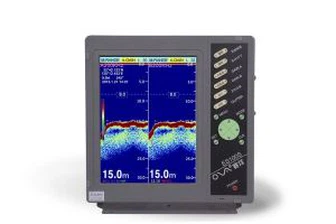Competitive Advantages Of Class A Shipborne Automatic Identification System (AIS) Products in The Maritime Industry
Competitive Advantages of Class A Shipborne Automatic Identification System (AIS) Products in the Maritime Industry
The maritime industry thrives on precision, safety, and efficiency, and at the heart of modern navigation technology lies the Class A Shipborne Automatic Identification System (AIS). As a cornerstone of maritime communication, Class A AIS products have established themselves as indispensable tools for commercial vessels, offering unparalleled competitive advantages over lower-class systems.
Unique strengths of Class A AIS system
1. Superior Technical Performance
Class A AIS products are engineered to meet the rigorous demands of international maritime regulations, including the International Maritime Organization (IMO) and International Electrotechnical Commission (IEC) standards. Unlike Class B systems designed for smaller vessels, Class A devices boast:
- Higher Transmission Power: With a 12.5-watt output (versus 2 watts for Class B), Class A AIS ensures broader signal coverage, reducing blind spots in remote or congested waters.
- Advanced SOTDMA Technology: The Self-Organized Time Division Multiple Access (SOTDMA) protocol allows Class A devices to dynamically allocate time slots, ensuring seamless communication even in high-traffic zones.
- Frequent Data Updates: Transmitting positional and navigational data every 2–10 seconds (compared to 30 seconds for Class B), Class A systems provide real-time situational awareness critical for collision avoidance.
These technical capabilities make Class A AIS the gold standard for large vessels, such as cargo ships, tankers, and passenger liners, where split-second decisions determine safety and operational success.
2. Regulatory Compliance and Global Acceptance
Class A AIS is mandated under the SOLAS Convention (Safety of Life at Sea) for vessels over 300 gross tonnage engaged in international voyages. This regulatory requirement creates a significant competitive edge:
- Universal Compatibility: Class A devices adhere to global standards, ensuring interoperability with coastal stations, satellites, and other vessels worldwide.
- Avoidance of Legal Risks: Non-compliance with SOLAS can result in fines, detention, or reputational damage. Class A AIS guarantees adherence.
3. Enhanced Safety and Collision Avoidance
- High-Resolution Tracking: By sharing detailed vessel data-including speed, course, destination, and cargo type-Class A systems enable precise monitoring by nearby ships and traffic management centers.
- Integration with ECDIS and Radar: Class A AIS seamlessly integrates with Electronic Chart Display and Information Systems (ECDIS) and radar, creating a layered safety net for navigators.
- Emergency Signaling: In distress scenarios, Class A devices automatically broadcast SOS alerts, accelerating search-and-rescue responses.
4.Future-Proof Technology
Class A AIS products are evolving to embrace emerging trends:
- Cybersecurity Features: With rising threats to maritime data integrity, modern Class A systems incorporate encryption and anti-tampering protocols.
- IoT Integration: Compatibility with the Internet of Things (IoT) enables predictive maintenance and data-driven decision-making.
- Sustainability Alignment: By optimizing routes and reducing fuel consumption, Class A AIS supports the industry's decarbonization goals.
5. Trusted Support and Long-Term Value
Manufacturers of Class A AIS prioritize reliability and customer service:
- 24/7 Technical Support: Global networks ensure rapid troubleshooting, minimizing downtime.
- Durability: Built to withstand harsh marine environments, Class A devices offer longer lifespans than lower-class alternatives.
- ROI Focus: While Class A systems require higher upfront investment, their compliance benefits, risk reduction, and efficiency gains deliver substantial long-term returns.







